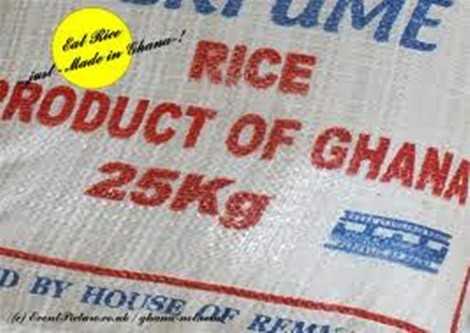
Reports gathered by the Business Day indicate that Ghana was about 56 percent self-sufficient in rice production.
Deputy Minister of Food and Agriculture in-charge of Crops Dr. Ahmed Yakubu Alhassan, said current statistics point to the fact that the country met 56 percent of demand for rice production.
This means that government’s efforts at improving local rice industry is gradually being realized.
“We need to intensify our efforts to get 100 per cent, we have been there before in the 1970s, we should get there again”, the minister said.
Dr. Alhassan said this at a day’s National Rice Development Strategy (NRSD) validation workshop which has the objective of doubling rice production by 2018.
The NRDS was formulated in 2009 and revised in 2015 by MOFA, in collaboration with the Coalition for African Rice Development (CARD).
According to the Ghana News Agency, government has set out strategic intervention areas which when addressed, will lead to the government achieving her mission of increasing rice production by 20 per cent per annum, by 2018.
The strategy is also aimed at addressing the challenges of low agriculture production, by focusing on some of the bottlenecks along the rice value chain which hitherto has inhibited the growth of the rice industry.
Some thematic areas to be critically looked at include; seed system, fertilizer marketing and distribution system.
The rest are harvesting access and maintenance system research and technology dissemination, community mobilization, farmer-based organization and credit management system, as well as monitoring and evaluation.
Dr. Alhassan said for effective and comprehensive implementation of the strategy and its proposed interventions, it had become necessary to revise the document to include emerging issues facing the sector, so it would be an organic document.
He said since it was launched in 2010, it had been one of the documents guiding rice development in Ghana, as many areas identified in the strategy document were being applied by some stakeholders in their operations.
They include NGOs (JAK Foundation) and public sector institutions, thereby giving some level of confidence that the document is useful and already receiving some level of attention.
He said a number of interventions had been designed, focused on areas which include; rice sector support project with emphasis on the development of water harvesting and regulatory structure supported by “AFD,” rice seed scaling project, supported by USAID, improvement and scaling up of the system of rice intensification in Ghana supported by World Bank/”WAAPP.”
Other interventions are; West Africa seed program supported USAID/West Africa, Enhanced Access to quality rice seed initiative supported by world bank/WAAPP, EDAIF sponsored rice project, preparation of the rice seed road map, supported by CARD, inland valley rice development project supported by AfDB and the Nerica Rice Dissemination project supported by AfDB.
Meanwhile a rice seed road map is being finalized for approval
Dr. Alhassan, however, noted that the interventions were not fully addressing the issues, and expressed the hope that other partners would provide technical and financial support to pipeline proposals that came out from other thematic areas in this strategy document.
























